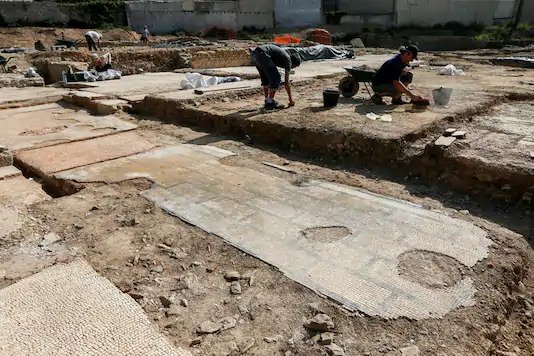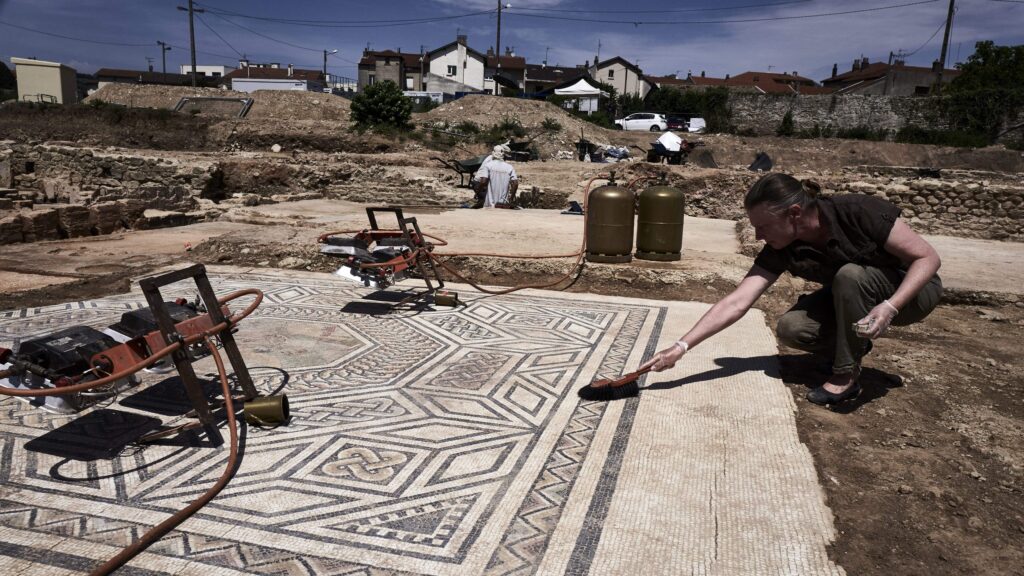Archaeologists Discovered a ‘Little Pompeii’ in France
A whole Roman neighborhood near the French town of Lyon has been discovered by archeologists. The location became quickly known as “Mini Pompeii” on the size of 7,000 square feet.

French archaeologists are describing their discovery as a “little Pompeii,” referring to the Roman city-state in present-day Italy that was well preserved after being buried by volcanic ash in the 1st century.
The site discovered in southern France holds some remarkably well-preserved remains of luxury homes and public buildings on the banks of the Rhone River dating back to Roman days, as reported by the Agence France Presse (AFP) news agency.

“We’re unbelievably lucky. This is undoubtedly the most exceptional excavation of a Roman site in 40 or 50 years,” Benjamin Clement, the archaeologist leading the project, told AFP.
The local French newspaper Courrier Picard meanwhile quoted Clement as saying, “This is an unprecedented opportunity.”
The city of Vienne – already famous for its Roman theater and temple – is situated at what used to be an important stop on the route connecting the northern Gaul region with the Roman province of Gallia Narbonensis in what is today southern France.
The new excavation site is located on the outskirts of the southeastern city of Vienne about 30 kilometers (18 miles) south of Lyon.
The site was discovered while the land above it was awaiting the construction of a major housing complex there. The French culture ministry labeled the dig an “exceptional find.”
Tiles, mosaics, and a philosophy school
The Roman neighborhood is believed to contain homes dating back to the 1st century AD and is assumed to have been inhabited for around 300 years before that. It seems to have been abandoned after a number of fires, as reported by AFP.
Among the structures to have partly survived is a home dubbed the Bacchanalian House. While a fire appears to have consumed the first floor, roof, and balcony of the luxurious home, parts of the collapsed structure survived, boasting balustrades, marble tiling, expansive gardens, and a water supply system.
Archaeologists led by Clement believe the house must have belonged to a wealthy merchant.
“We will be able to restore this house from the floor to the ceiling,” Clement told AFP.
An abundance of mosaics, one depicting the god of the satyrs, Pan, kidnapping Thalia, the muse and patron of comedy, was also reportedly found at the excavation site.
The archaeologists also found a large building at the site of a former market believed to have been reserved for public use. Clement believes it may have housed a philosophy school.
Researchers hope to restore artifacts for exhibition at the Museum of Gallo-Roman civilization in Vienne by 2020.
Work meanwhile continues at the site until the end of the year, allowing time for further discoveries to be unearthed.





